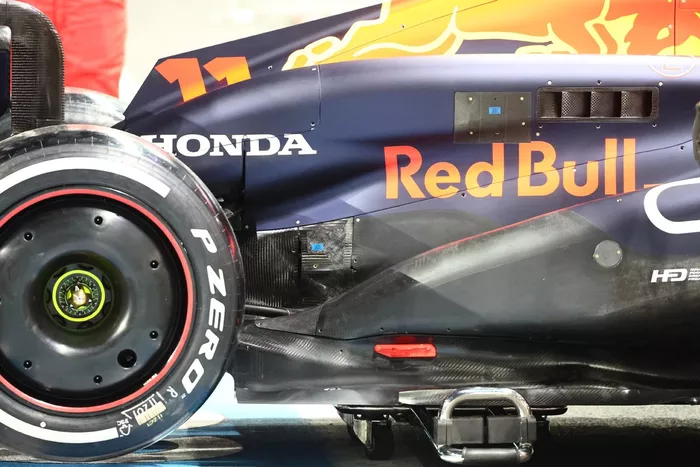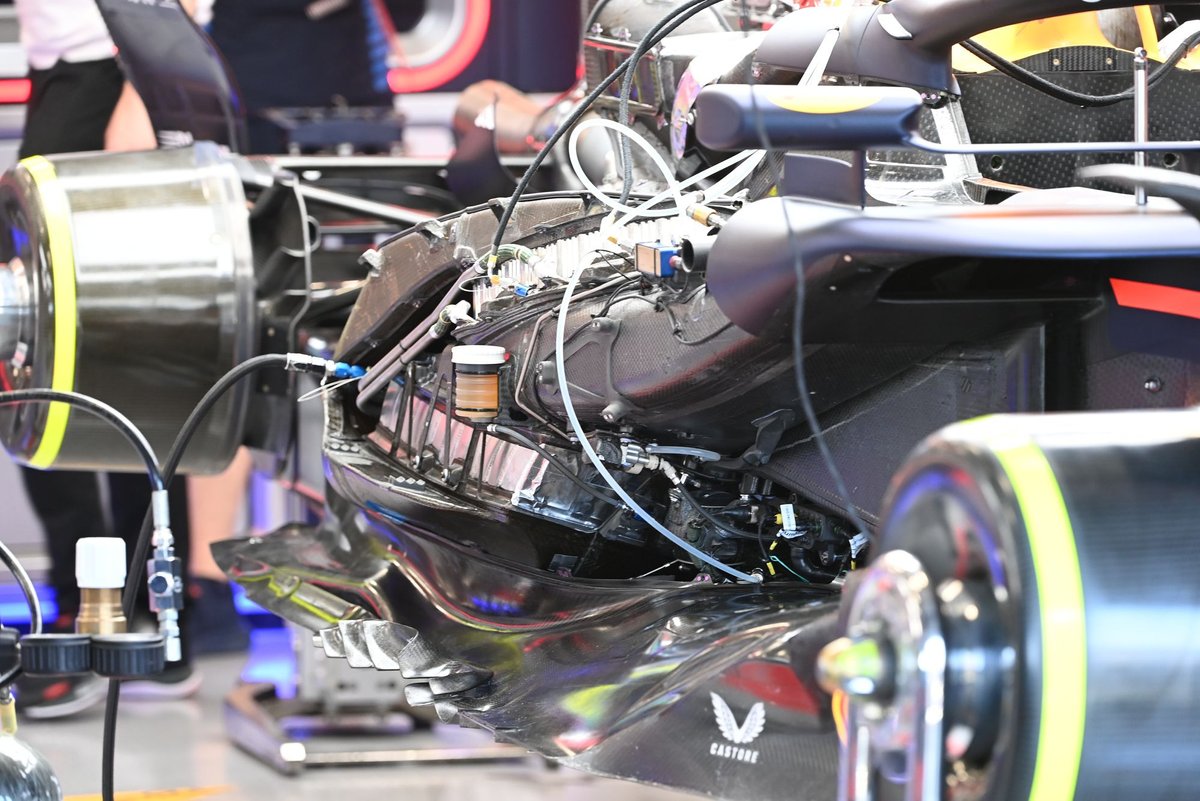McLaren has introduced modifications to its rear wing design specifically for the Saudi Arabian Grand Prix. The adjustments include a dipped section in the center of both the mainplane and upper flap, as well as a curved notch in the upper flap’s trailing edge.
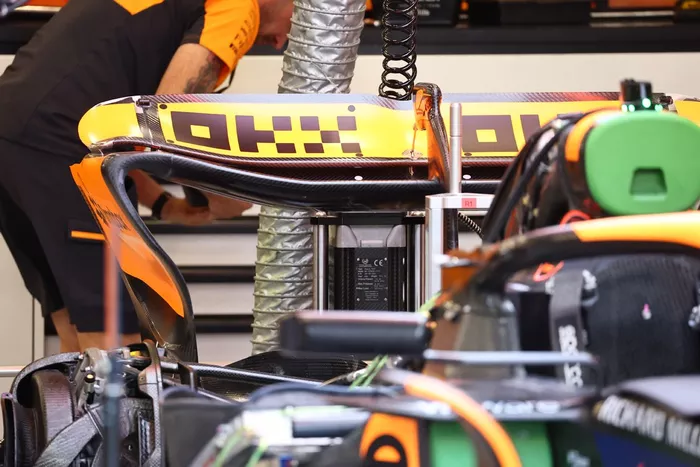
The Sauber C44 showcases a rear wing with a double pillar layout and a shallow swan-neck arrangement. Noteworthy are the teardrop-shaped flap pivots, a feature pioneered by Sauber several seasons ago and now adopted by other teams across the grid.
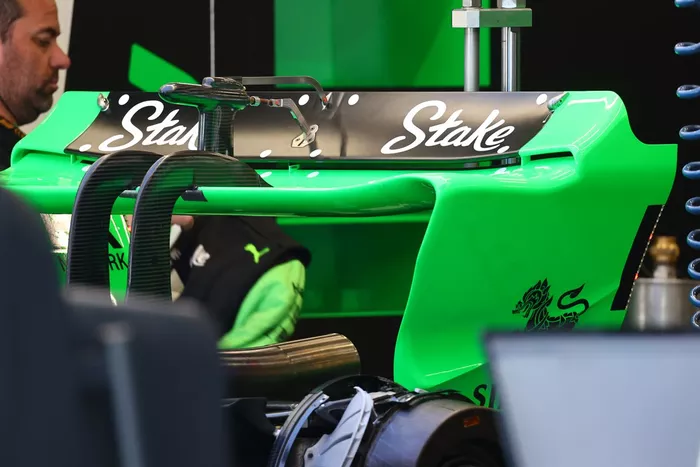
Ferrari’s rear wing incorporates a Gurney flap attached to the upper flap’s trailing edge, although the team is considering its removal to achieve a better balance and potentially enhance straight-line speed. Ferrari also continues to utilize the semi-detached tip section solution introduced earlier in the season.
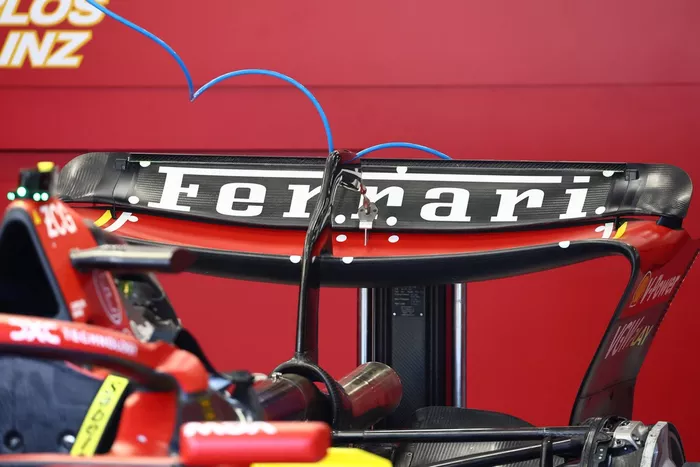
Aston Martin’s rear wing design features varying chord heights and a trimmed trailing edge. The wing transitions from a shorter chord section near the tip to its maximum height inward, with a notch employed in the central section.

Mercedes unveils a new lower downforce rear wing arrangement for the event, with the central portion of the mainplane flattened out and the upper flap following similar contours. A notch in the center of the upper flap aids in reducing drag, and the DRS mechanism is visible without the bodywork in place.
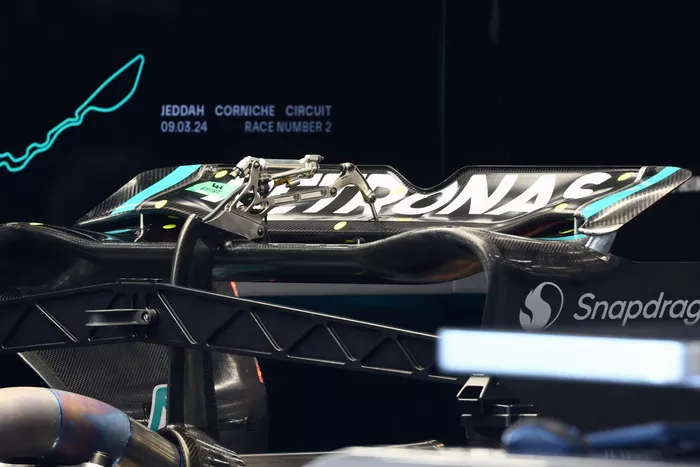
Williams showcases two different cooling configurations, with a louvred panel visible in the sidepod’s gulley on one arrangement.
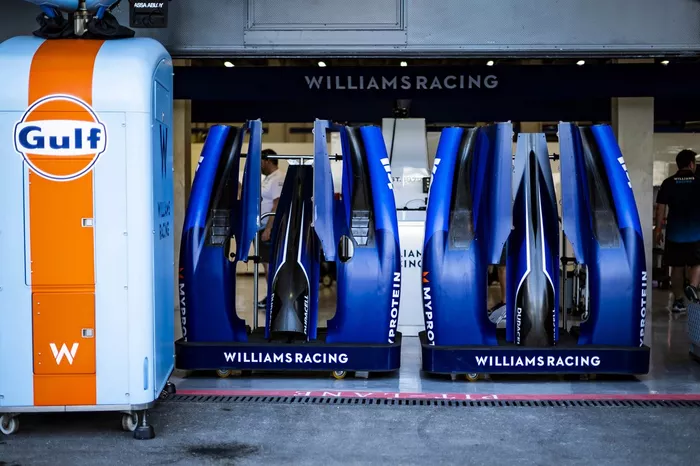
The RB01 boasts a low downforce rear wing featuring semi-detached tip sections and a shallower angle of attack on the mainplane and upper flaps.

A close examination of the rear crash structure on the Aston Martin AMR24 reveals a twin winglet arrangement, with one element directly affixed to the crash structure and the rearmost one positioned on a spar to sit outboard of the crash structure.
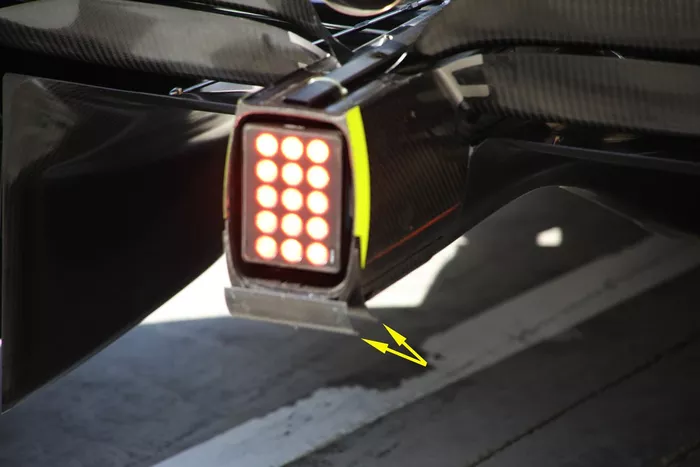
Inside the Red Bull RB20’s sidepods, a V-shaped layout for radiators and coolers is evident.
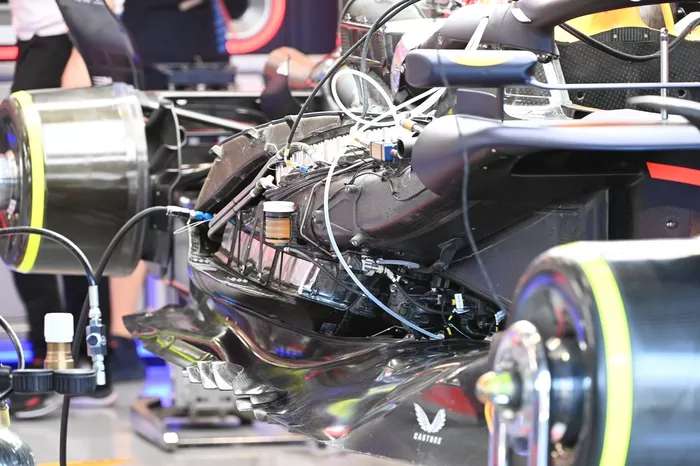
The upswept forward section of the edge wing on the Red Bull RB20 features divisible strakes to manage flow effectively.
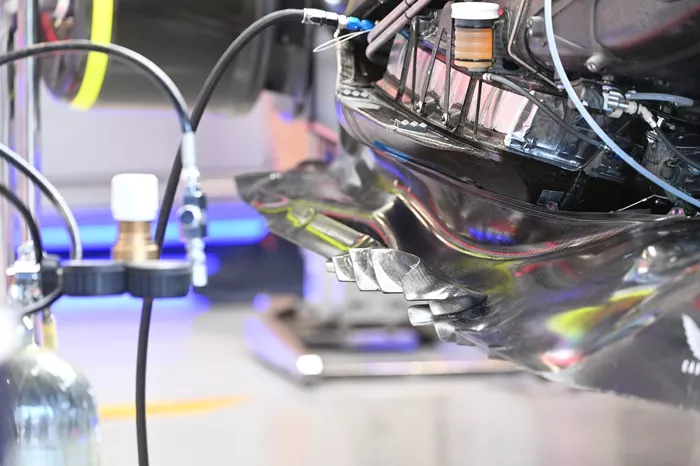
Red Bull’s lower downforce rear wing arrangement resembles the one seen in Bahrain, with alterations to camber, chord, and angle of attack to reduce downforce and drag.
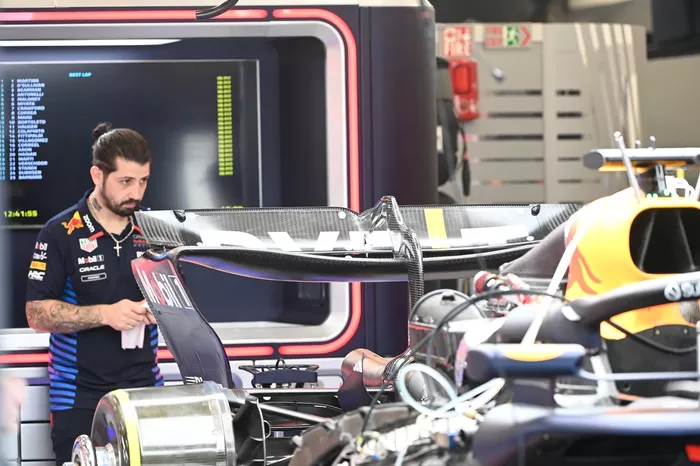
A close-up of the snorkel on the RB20 reveals its connection to a similar arrangement housed in the nose, supplying cool air into the cockpit.
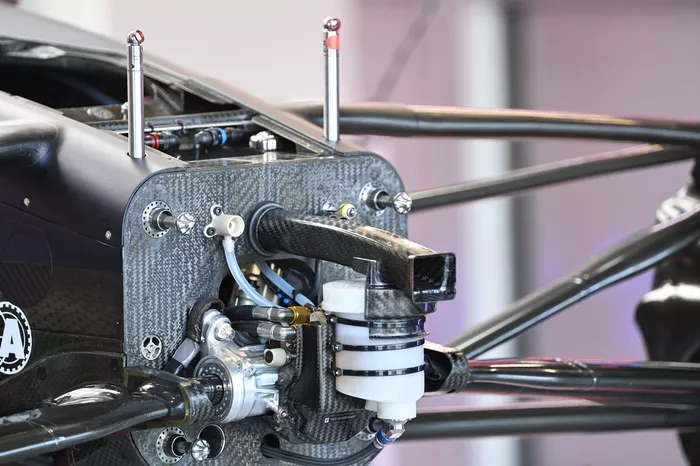
Red Bull employs a d-shaped inlet arrangement on the front brake duct, extending similarly along its length to serve as the hot exit at the rear of the assembly.
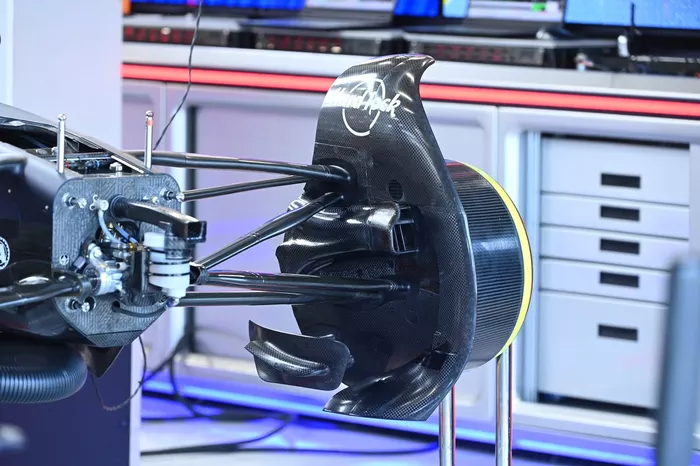
A detailed look at the semi-detached tip section on the RB20’s rear wing showcases the team’s innovative design approach.
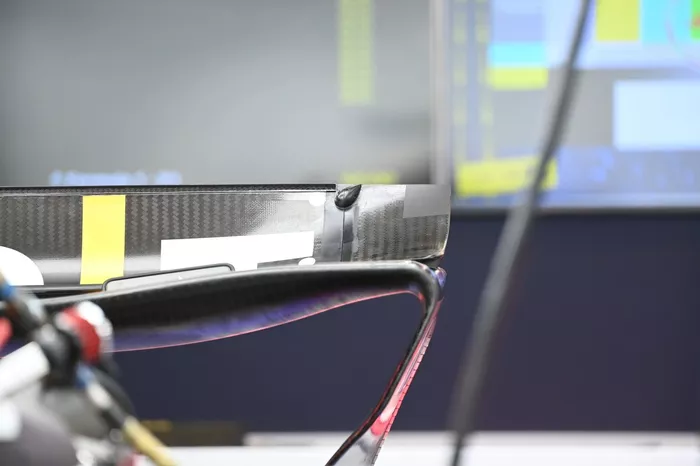
Mercedes W15 reveals its centerline cooler and some inboard suspension elements, following a switch to a pushrod layout for 2024.
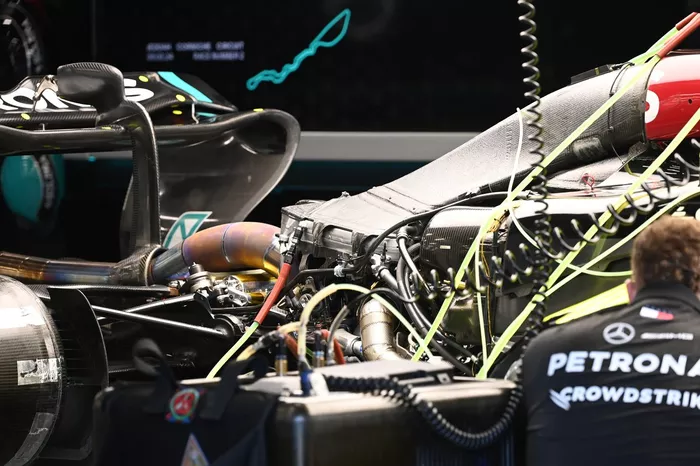
Mercedes’ lower downforce rear wing features a reduction in the size of the mainplane in the central section and a more abrupt transition to the endplate, mirrored in the upper flap’s design.
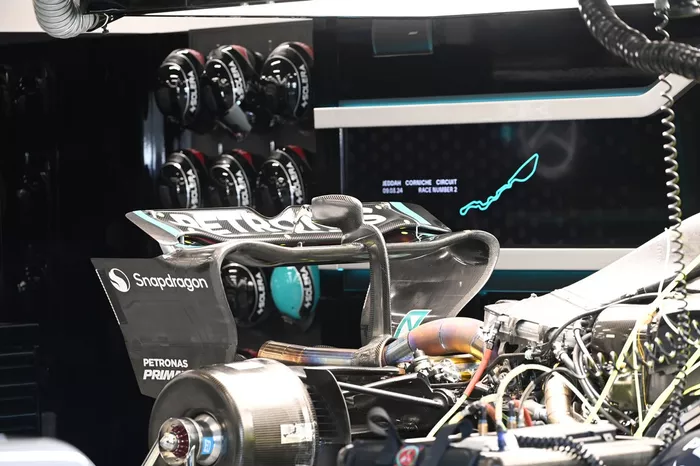
A close-up of the Ferrari SF-24’s inboard suspension elements reveals the use of Belleville springs as part of the heave damper arrangement.
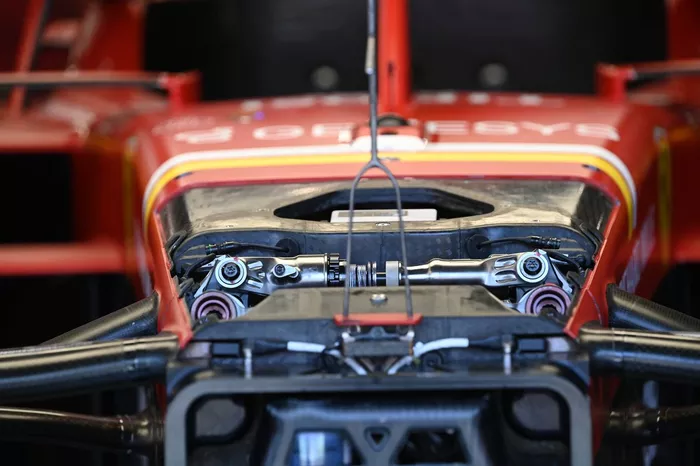
A detailed view of the front caliper and its enclosure on the Ferrari SF-24 is provided.

Ferrari’s rear wing for 2024 includes a semi-detached tip section aimed at managing vortex shedding from this region more effectively.
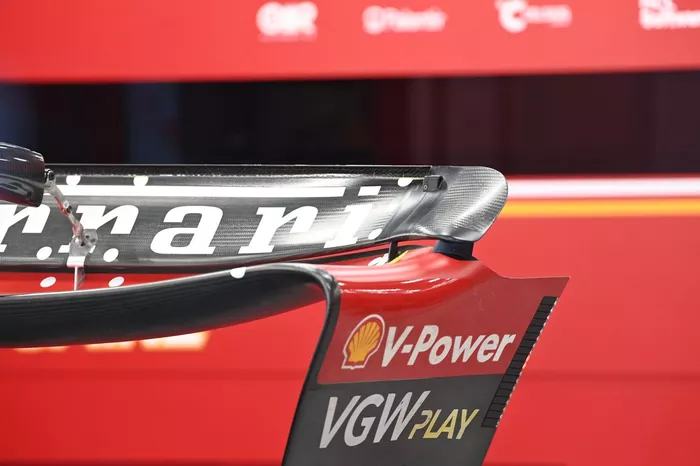
A close-up of the front brake duct inlet on the Ferrari SF-24 reveals it divided into different channels to supply cool air to various components, with wires on the leading edge to prevent debris clogging.

The outer section of the MCL38’s front wing features skewed upper elements from the endplate, enhancing outwash around the front tire.
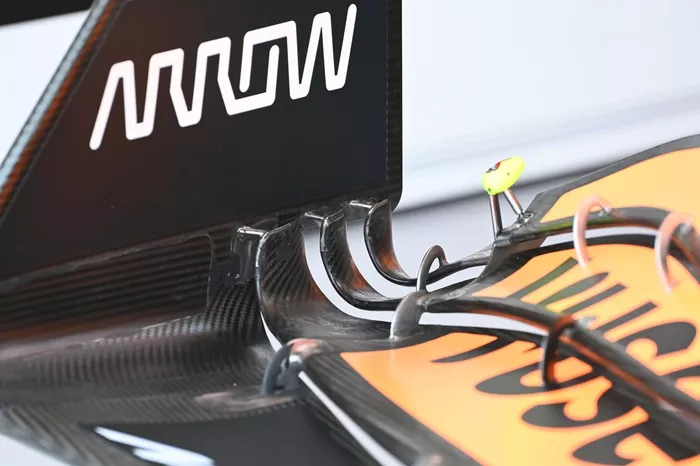
Williams plans to trial a single beam wing element on the FW46 during Free Practice to reduce drag and balance the car.
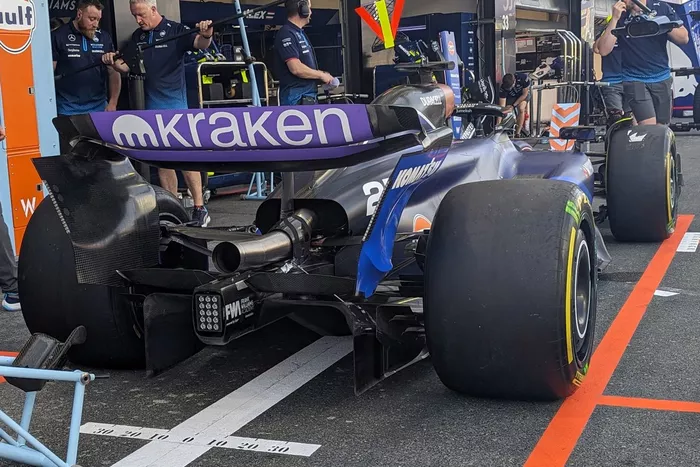
Similarly, the RB01 is equipped with a single-element beam wing, coupled with a lower downforce rear wing arrangement.
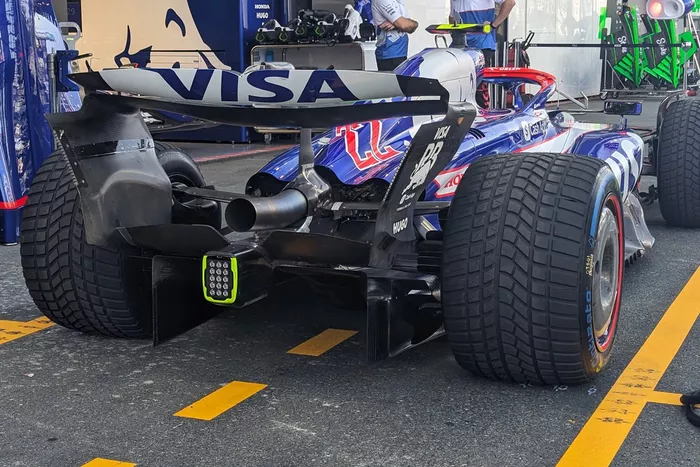
Lastly, the rear bodywork on the RB20 has been altered for the Saudi Arabian Grand Prix to better suit the cooling requirements of the circuit.
